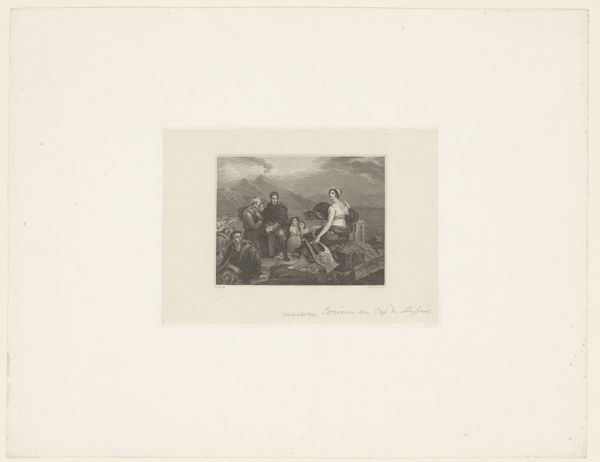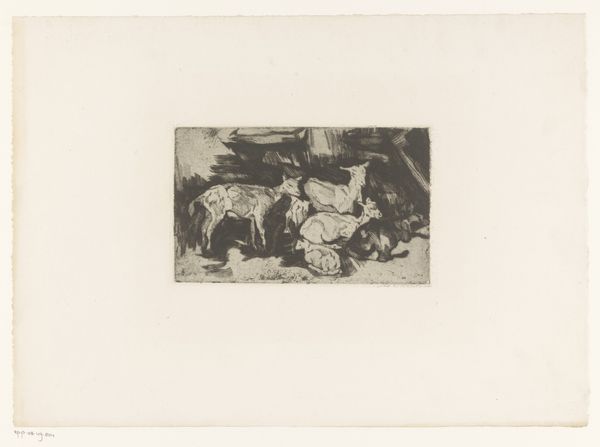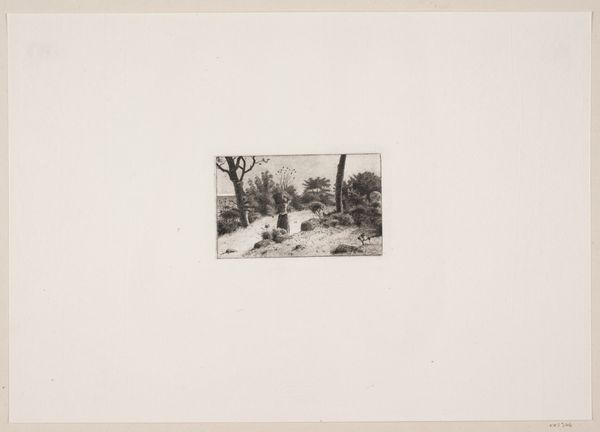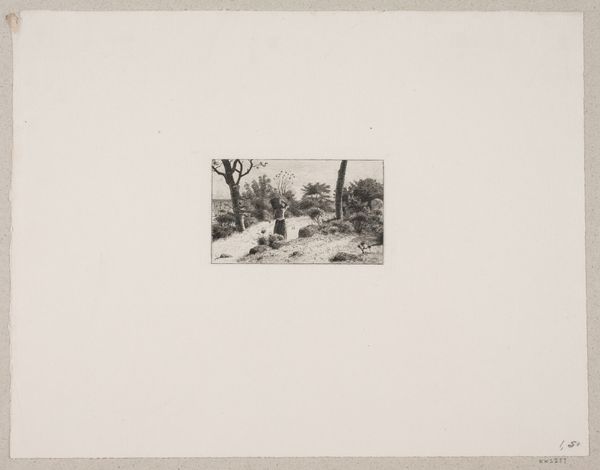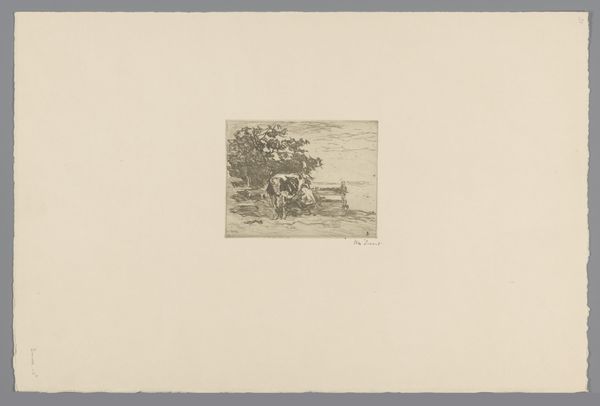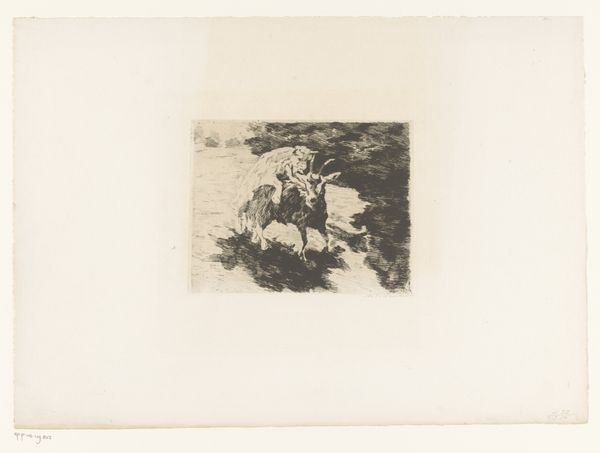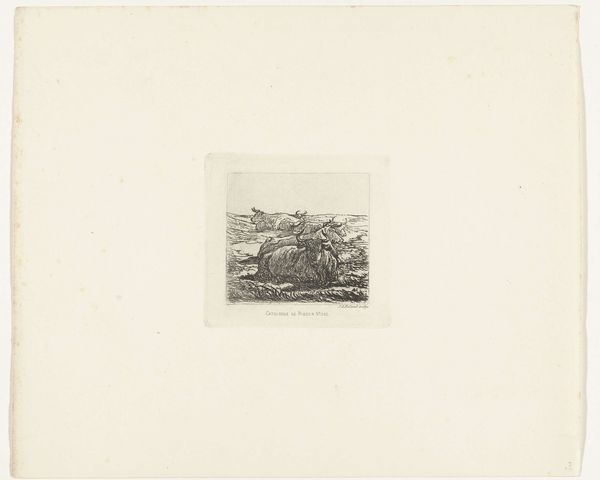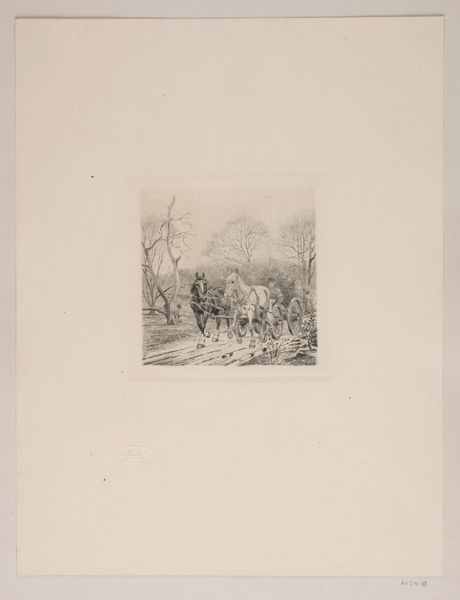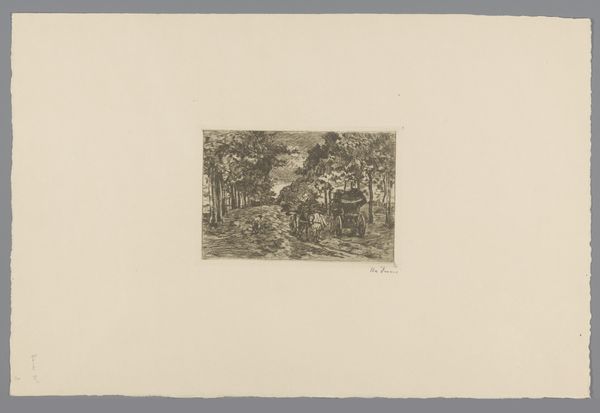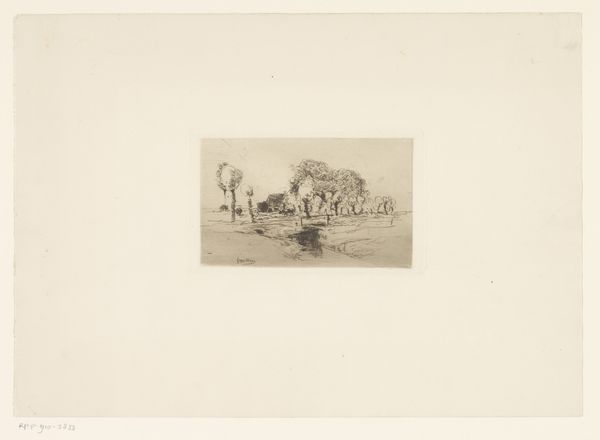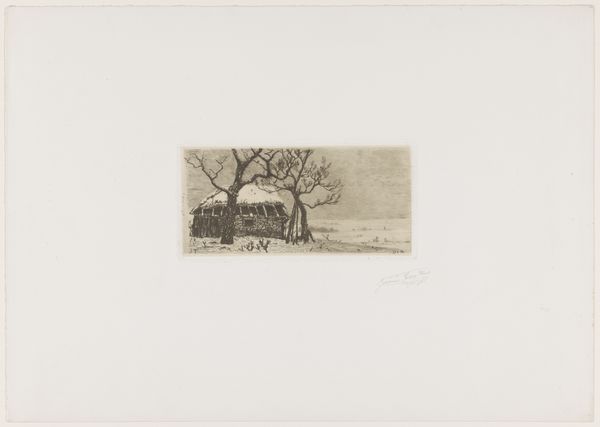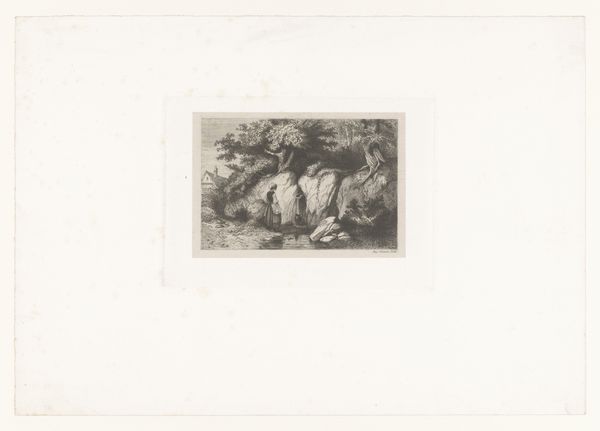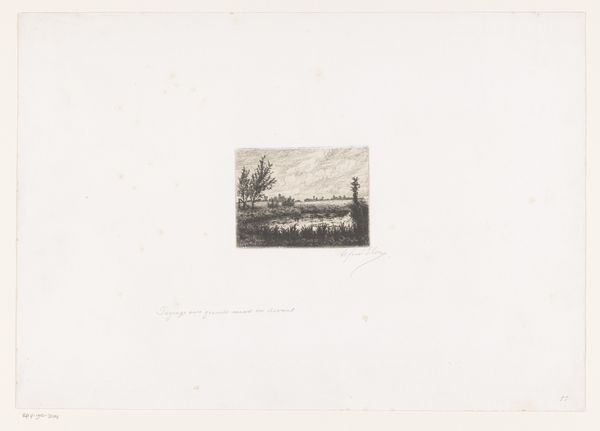
print, etching
# print
#
etching
#
landscape
#
monochrome
Dimensions: height 129 mm, width 178 mm
Copyright: Rijks Museum: Open Domain
Editor: Here we have Adolf Eduard Herstein’s “Herd of Cows and Goats by a Wood’s Edge,” an etching dating from 1879 to 1932. It feels…pastoral, obviously. But something about the animals moving creates a subtle tension against the static trees. What do you see in this piece? Curator: The depiction of livestock, particularly in a rural landscape, might seem simple on the surface. However, it's essential to consider this work within its socio-historical context. Who typically owns livestock, and who benefits from their labor? Whose lands are these animals traversing? These are critical questions. Editor: I hadn't thought about it that way. It's easy to get caught up in the aesthetic appeal without considering the socioeconomic implications. Curator: Exactly. Moreover, consider the artist’s choices: the deliberate rendering of the trees versus the blurring effect of movement in the herd. What commentary might Herstein be making about nature versus culture, stasis versus progress? Editor: It makes me think about how often we idealize rural life without fully understanding its complexities and potential inequalities. I see that now. It isn't simply a pleasant landscape; it’s layered with potential narratives. Curator: Indeed. It asks us to unpack the ideologies embedded within seemingly innocuous representations of nature and labor. Are there aspects of our present day mirrored in this image from the past? Editor: That's a lot to think about. It really reframes how I’ll look at landscape art from now on. Curator: Precisely, engaging with art history demands a willingness to look beyond the surface and recognize the intricate relationships between art, power, and social structures.
Comments
No comments
Be the first to comment and join the conversation on the ultimate creative platform.
